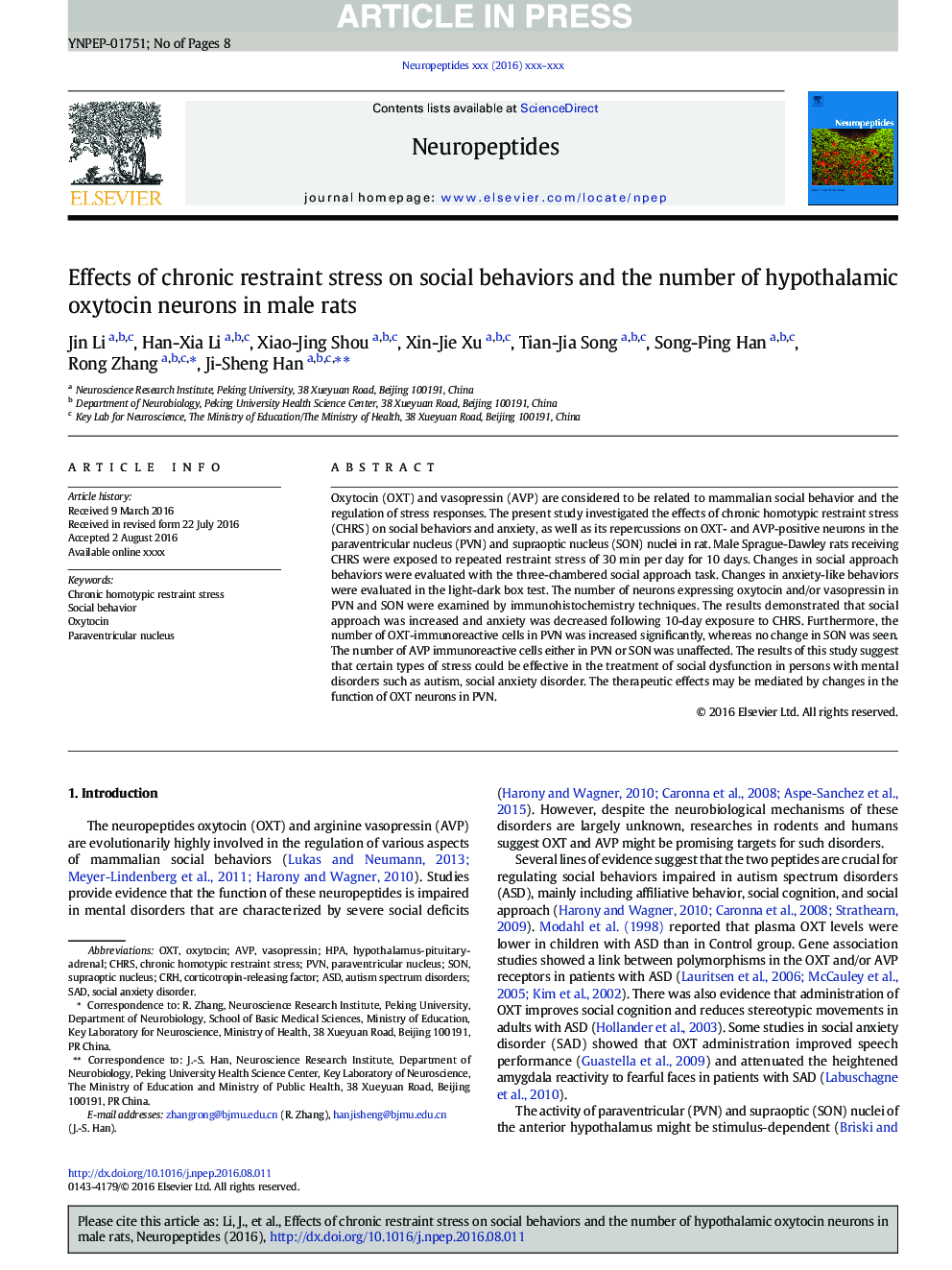| Article ID | Journal | Published Year | Pages | File Type |
|---|---|---|---|---|
| 8633835 | Neuropeptides | 2016 | 8 Pages |
Abstract
Oxytocin (OXT) and vasopressin (AVP) are considered to be related to mammalian social behavior and the regulation of stress responses. The present study investigated the effects of chronic homotypic restraint stress (CHRS) on social behaviors and anxiety, as well as its repercussions on OXT- and AVP-positive neurons in the paraventricular nucleus (PVN) and supraoptic nucleus (SON) nuclei in rat. Male Sprague-Dawley rats receiving CHRS were exposed to repeated restraint stress of 30Â min per day for 10Â days. Changes in social approach behaviors were evaluated with the three-chambered social approach task. Changes in anxiety-like behaviors were evaluated in the light-dark box test. The number of neurons expressing oxytocin and/or vasopressin in PVN and SON were examined by immunohistochemistry techniques. The results demonstrated that social approach was increased and anxiety was decreased following 10-day exposure to CHRS. Furthermore, the number of OXT-immunoreactive cells in PVN was increased significantly, whereas no change in SON was seen. The number of AVP immunoreactive cells either in PVN or SON was unaffected. The results of this study suggest that certain types of stress could be effective in the treatment of social dysfunction in persons with mental disorders such as autism, social anxiety disorder. The therapeutic effects may be mediated by changes in the function of OXT neurons in PVN.
Related Topics
Life Sciences
Biochemistry, Genetics and Molecular Biology
Endocrinology
Authors
Jin Li, Han-Xia Li, Xiao-Jing Shou, Xin-Jie Xu, Tian-Jia Song, Song-Ping Han, Rong Zhang, Ji-Sheng Han,
